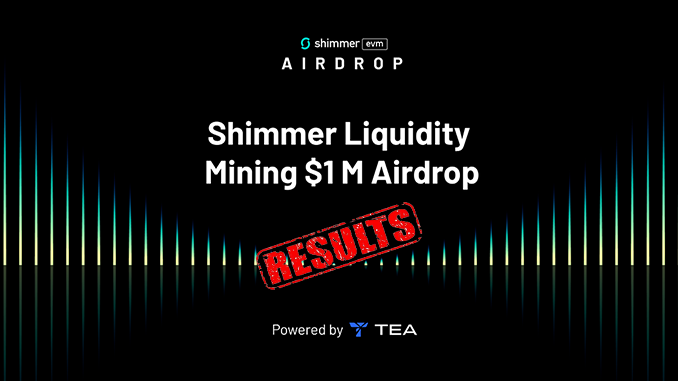
On January 31, the IOTA side project Shimmer (SMR) launched the campaign for an airdrop. The registration phase has now ended and a positive interim conclusion is circulating online. But Shimmer investors should do the math.
At the IOTA side project Shimmer, hopes are focused on sustainable growth in an airdrop campaign in which 1 million US dollars are to be distributed in SMR. The campaign came with strict rules; at least 1,000 US dollars had to be invested. A last-minute rule change just 48 hours before the end of the registration period for the Shimmer Airdrop, which ran from January 31 to February 14, caused some unrest. On X (formerly Twitter), a positive interim summary is doing the rounds, which user Jake has compiled for the Shimmer community. Let’s take a closer look at the results:
– The goal of the Shimmer campaign was to attract new investors and capital towards decentralized finance (DeFi) in the ecosystem. The data source for Jake is therefore DeFiLlama. There, around USD 3 million in capital inflow to Shimmer was recorded during the two weeks that were open for registration for the airdrop. However, as elsewhere, Jake likes to pick out temporary highs in his analysis, and the trend already seems to be declining again.
– In order to qualify for the airdrop, Shimmer Bridge had to be used. The campaign was successful for the platform, with Shimmer Bridge experiencing an almost threefold increase in orders and volume. The $3 million inflow of capital to Shimmer DeFi went through Shimmer Bridge and, according to Jake, came mainly from Fantom (FTM), Polygon (MATIC) and Avalanche (AVAX) as well as BNB Chain.
– In the end, there were five DeFi platforms where participants in the Shimmer airdrop have to deposit their contributed capital for at least 30 days, so this period is still ongoing. The decentralized crypto exchange ShimmerSea gained around USD 1 million TVL during the registration phase and now stands at just under USD 5.7 million. TangleSwap recorded the highest inflow if, like Jake, the staking there is excluded. In this case, TangleSwap recorded an inflow of around USD 1.5 million in the two weeks from January 31 to February 14, but including staking, the capital raised at TangleSwap actually fell slightly in the same period.
– Iotabee basically saw no activity at all in the two weeks under review, as did Swapline. DeeprFinance recorded an inflow of capital of around USD 300,000 in the same period. Jake simply shifts the observation periods a little for Swapline and DeeprFinance in order to achieve better results.
Shimmer has distributed Jake’s analysis himself via X and calls it “excellent”.
Conclusion: Shimmer Airdrop – billing starts on March 16
Jake himself speaks of a good 1,000 participants in the qualification phase of the Shimmer Airdrop and admits in a comment that the campaign was expensive and not suitable for everyone. However, like simmer, he considers the campaign a success so far. The 1 million US dollars advertised will be distributed in SMR from March 16, and since the conditions require a 30-day holding period for the capital contributed beforehand, the first half of March would perhaps be better suited for an analysis. But let’s just leave such objections aside and add up based on the data presented by Jake:
– 1 million US dollars in advertising costs from Shimmer’s reserves have been followed by 3 preliminary million in capital inflow – that sounds pretty meager.
– At most 1,000 investors and DeFi users have engaged with Shimmer and the associated ecosystem for the first time as a result of the campaign. It remains to be seen how many of them will remain loyal until March 16 and beyond.
– If you only take DeFi with the Ethereum Virtual Machine (EVM) integrated into Shimmer as a benchmark, Shimmer has fought its way into the top 50 ecosystems according to DeFiLlama. Without the special effect of the SMR Airdrop campaign, however, setbacks are imminent.
– During the registration phase for the airdrop, SMR experienced an all-time low and IOTA Foundation CEO Dominik Schiener publicly withdrew his trust in Shimmer.
Observers also classify the Shimmer airdrop as a test run for the time when the EVM is integrated into IOTA, probably at the end of March or in April. Shimmer’s results so far suggest little response or efficiency, given the high cost of the promotion. The 1,000 dollars that participants in the SMR airdrop had to contribute in liquidity also costs everyone in advertising costs calculated in SMR. And it is doubtful whether the developments picked out and presented by Jake are sustainable – the trends are already declining again. Investors should rather make their calculations for Shimmer and IOTA with a sharp pencil.
Leave a Reply